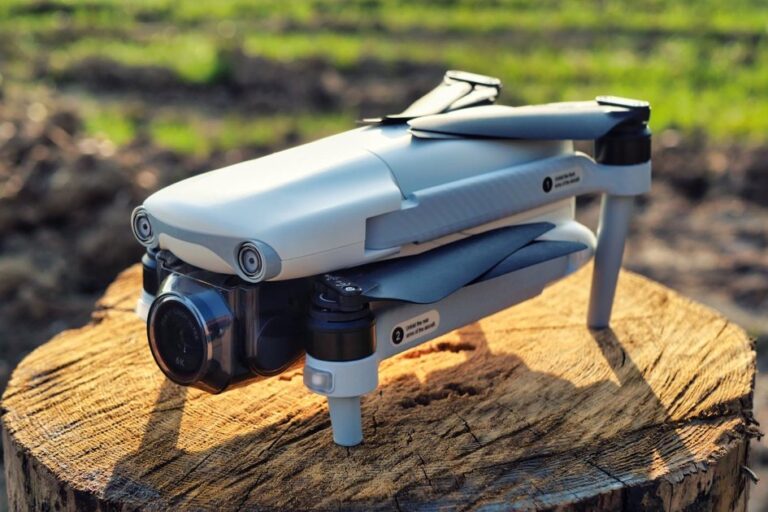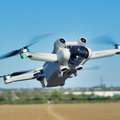(Pocket-lint) – When it comes to high-quality, consumer-friendly camera drones, the field has been pretty much dominated by DJI since its inception. However, the competition is catching up, and we think some of the best examples of this are the flying machines in Autel Robotics’ lineup.
We’ve been testing out the Evo Lite+, a high-end camera drone that situates itself between the DJI Air 2S and Mavic 3 both in terms of pricing and features.
On paper, the specs are impressive, but can the plucky Autel keep up with the top dogs? Let’s take a look.
The Evo Lite+ performs to an excellent standard on most fronts. It’s stable and easy to fly, and we think the AutelSky app is more intuitive than its main rival in many ways.
Image quality is also great in both photo and video modes, while settings are easy to dial in and the adjustable aperture helps to acquire your desired look.
Positioning the drone between the Air 2S and Mavic 3 is smart, we think, as it means there’s no direct competitor that can offer all of the same features.
Unfortunately, though, the drone isn’t without its shortcomings. We’re happy to see tracking implemented, but it feels incomplete and unreliable. The same can be said for the Log colour profile. We’re glad it’s been added, but the fact that it doesn’t work with manual settings is bizarre and alienates its audience.
For now, we’d still advise sticking with DJI’s offerings, but we think Autel is closer than ever to snatching the crown.
- Up to 5.4K 30fps video
- 20MP still images with RAW DNG
- Impressive flight times
- Good range
- Lovely 1-inch sensor
- Adjustable aperture
- Tracking modes need work
- No Log profile in manual mode
- Less refined than DJI’s offerings
Design and features
- Takeoff Weight: 835g
- Wheelbase: 368mm
- Storage: MicroSD card slot – Up to 256GB supported
Despite what the product name suggests, the Evo Lite+ is not a lightweight drone. It’s a whopping 240g heavier than the DJI Air 2S, and just 60 grams lighter than the DJI Mavic 3. It’s slightly smaller than the Mavic 3, both while folded and in use, but we’re talking a matter of millimetres – they’re effectively about the same size.
The overall look of the drone is pretty Mavic-esque, with its folding arms, underslung gimbal and overhanging obstacle avoidance sensors. But one area in which Autel differentiates itself here is in the choice of colour options. We’re testing the white version, but it is also available in a subtle grey and a more striking orange colourway.
Of all the options, the orange one is likely the easiest to spot from afar, but it’s also the most conspicuous, so it’s worth considering which will be best for your needs. We think it’s worth noting that the white one is pretty tricky to keep clean, too. We landed once on a particularly dusty field and ever since have been noticing specs of dirt and smudges around the housing – and these would be less noticeable on a darker coloured option.

The arms are made from carbon fibre and have a matte finish with a visible weave. They feel reassuringly strong and rigid, more so than the arms of DJI’s rival products. Unfortunately, the rest of the design fails to outshine the competition.
DJI has set an extremely high standard with accessories like the Mavic 3’s muzzle-style gimbal protector, and, comparatively, the snap-on transparent plastic gimbal cover feels like stepping back in time. It’s fiddly to attach and we can imagine it cracking easily if mishandled. There’s no way to reign in the folding propellers, either, and they’ll snag on things every time you remove the drone from your bag.

The controller is also a mixed bag. It feels very high quality and is nicely ergonomic, with great gimbals and solid tactile buttons, but the design just isn’t on par with the competition. Our biggest gripe is that there’s nowhere to store the stick ends or cables, so you have to be very careful not to lose them.
We’re not too keen on the aesthetics, either. It’s not the most important thing, but the controller reminds us of a third-party Xbox controller that you’d fob off on a younger sibling, rather than a controller for a high-end aerial vehicle.
The flying experience
- Max speed: 40.26mph in Ludicrous Mode
- Max flight time: 40 minutes
- AutelSky app with 2.7K SkyLink video transmission
In flight, the Evo Lite+ performs well. It’s extremely stable, even when things get windy, thanks in large part to its mass, sizable propellers and ample power. It’s rated to handle up to 38mph winds, which is almost double what the Air 2S claims.

The drone is very easy to control, and, if you’re familiar with DJI’s offerings, you’ll feel well at home here, too. The video downlink is extremely high resolution, and when you’re within a kilometre of yourself the app will display up to a 2.7K video stream that makes it very easy to spot obstacles and ensure your image settings are correct.
Autel claims up to 40-minutes of flight time in windless conditions, but we live in the UK, and so that’s not something we often get to experience. Despite our gusty weather, we found that we were frequently getting flights of over thirty minutes, and that’s more than enough for our purposes.

When it comes to range, we couldn’t push it to the absolute limits (it wouldn’t be legal to do so) but we never experienced a full loss of signal. Even when flying through trees and other obstructions, the signal remained strong and the controls stayed responsive. If you live somewhere that allows you to fly beyond the visual line of sight, the Evo Lite+ should be able to operate up to 7.5 miles away.
The Evo Lite+ features six obstacle avoidance sensors to aid in safe flight. We found these to work quite well, giving us plenty of warning when we were close to objects and stopping the drone before it could hit anything.

An area that’s lacking, however, is dynamic tracking. DJI excels at this and its APAS system allows its drones to follow subjects through challenging environments, intelligently weaving in and out of obstructions. The Evo Lite+ shipped without any kind of subject tracking, initially, and it has been added via firmware updates in the time since launch.
Autel’s tracking feature only works with human subjects, so you won’t be able to follow a car, for example. However, if you have a person on the outside of a vehicle like a bike or a skateboard, that’ll work. It will only follow from behind, though, whereas DJI’s system can hold any orientation, including flying backwards if it needs to.

It locks on quite well and even found our subject again after they walked behind a tree. However, when your target walks towards the drone, it tries to get behind them to continue following, and it’s not very good at that. It darts about very dramatically trying to find the right orientation and it’s quite scary to watch. If it was our money invested in the drone, we might have had a heart attack.
Photo and video quality
- 29mm equivalent lens with 1-inch CMOS sensor
- Adjustable aperture: f/2.8 to f/11
- Up to 20MP stills
- Up to 5.4k 30fps videos
Overall, the Autel Evo Lite+ produces sharp, vibrant and pleasing images straight from the camera. The video specs are essentially on par with the DJI Air 2S, but, with the Evo Lite+, you gain an adjustable aperture, which is invaluable when trying to maintain your desired shutter speed.

The camera housing proudly touts its 6K capabilities. In reality, you’re getting 5.4K.
It’s questionable branding, but, either way, the 5.4K image is exceptionally sharp and gives great flexibility in post-production workflows. We were equally impressed with the 4K video results, though we were disappointed to see that the image crops in significantly at 4K 60fps.
In both photo and video modes, the colours looked great with greens being particularly vibrant. We noticed a slight tendency toward the magenta tones, but it looks good, so we’re not complaining.
The image is a little too sharpened for our tastes, though, and we wished there was a way to turn the sharpening down in the app – but the same can be said for most of DJI’s drones.
A flatter Log profile has been added in firmware since the drone launched, but it leaves a little to be desired. The video is only 8-bit, which will disappoint professionals, and it can only be used in auto mode, so there are no manual adjustments for the shutter speed and aperture etc.
Given that Log colour is very much the remit of professional shooters, this makes no sense whatsoever. You also have to fly using the flat image, which makes it hard to see where you’re going, especially when it’s bright out. We hope this can be addressed in future firmware.
For photographers, you can shoot RAW DNGs, as well as JPG files and we were very satisfied with our results. The RAW files are 10-bit and allow for plenty of flexibility when tuning your image after the fact.
We’re impressed with the Evo Lite+ and think Autel has presented the most compelling alternative to DJI to date. However, shortcomings like the bizarre Log colour limitations and poor tracking implementation mean that most people should stick with the tried and true DJI options for now.
Writing by Luke Baker. Editing by Conor Allison.


